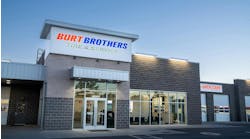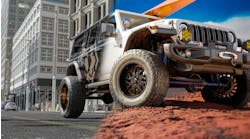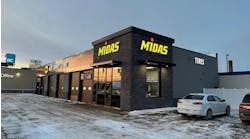In the dynamic landscape of modern marketing, the emergence of social media has revolutionized how businesses promote products and services. Yet, amid the digital frenzy, website marketing remains a cornerstone for engaging customers.
In this era of connectivity, tire dealers are navigating the convergence of traditional web-based strategies and the ever-expanding realm of social platforms to captivate audiences and drive growth.
“As long as there is a need — a need for new tires, a need for an oil change, a need to service vehicles — you should consider your website (to be) your most knowledgeable and enthusiastic salesperson,” says Richard Clarke, co-founder and director of client services for Fifteen Degrees LLC, a New York City-based branding agency.
Keeping it simple
Clarke says websites don’t need to be complicated and tire dealers will see more success if they keep their sites simple.
“We aren’t trying to solve the world’s problems with our website,” he says.
“Find the right wording for your messaging, which is basically just coming up with the right wording of what problem your company solves. People are coming to your website to find tires or to make their vehicles perform better. That’s it. So keep it simple. Say your message once and say it clearly.”
Clarke emphasizes that tire dealerships should base their messaging on what he calls their “unfair advantage,” a concept that Fifteen Degrees consistently assists clients in identifying.
An unfair advantage is what sets your tire dealership apart from your competitors, he explains.
“A tire dealer's unfair advantage springs from your brand’s DNA,” he says. “Many dealers have been in the business for years, so when asked what makes them different, they reply, ‘We have good people’ or ‘My business has been here for two generations.’ All of that sounds great, but the unfair advantage is more than that.”
To find their unfair advantage, Clarke says it’s important for tire dealers to survey customers and ask why they came to their dealership. What did the dealership do that the customer liked and what can the dealership do better?
“Understanding who you are through your customers’ eyes is your unfair advantage,” says Clarke.
“It could be something as simple as a counter rep greeting your customers before they step into the dealership, asking how they can help them today. It could be the service technician who has worked at your dealership for a long time and your customers trust him to service their vehicles.
“The goal is to find language to use in your brand messaging on your website that encourages action and engagement. If done right, it creates love for your dealership and increases your brand value with more business.”
Another way to enhance website efficiency is through social media marketing.
“A consistent and valuable social presence is a must,” he says.
Clarke highlights the distinction between social media and website marketing, noting that social media can drive traffic to the website.
“Website marketing is when people come to you and social media marketing is when you go to the customer and reach them at a time and place where they’re enjoying themselves,” says Clarke.
Social media is more for brand awareness, while a website is more audience-specific, according to Clarke.
“Pick the channel — Facebook, Instagram, TikTok, Pinterest, whatever — and own it. Post consistently, but keep it interesting and look for ways to drive business.”
The last tool that Clarke says can be used to enhance a website is user experience technology, such as the use of chatbots, which can be programmed to ask the questions a tire dealer typically asks when facing a customer.
“According to a Google user study, customers visit an average of three websites before purchasing. Another study shows more than 80% of web traffic is just (people who are) shopping price.
“A chatbot can help welcome them with a ‘Can I help you?’ message and can be programmed to say, ‘We have a special this week: buy three tires, get the fourth free. Can I help you find a few brands to consider?’”
Another employee
“A website is really just an underpaid employee that’s doing all of the heavy lifting,” jokes Clarke.
However, he says it’s a good idea to have a professional in charge of a tire dealership’s website because it is a “managed process.”
“You need someone who knows what they’re doing to set up your website correctly. They need to make sure your site’s talking to Google and all the other search engines, like Bing or Yahoo.”
Clarke says it’s also important for dealers to hold their website managers accountable.
“Performance means making sure that when someone in your area is looking for tires or tire services, your website comes up on that first search engine page,” he says.
“Getting on that first page is not that hard to do. You just have to hire the right people and make sure your messaging is clear, consistent and active.”
It’s crucial that whoever the tire dealer chooses to manage his or her website is keeping up with search engine optimization (SEO), making sure there are no broken links on the website or that there is no duplicate information, says Clarke.




